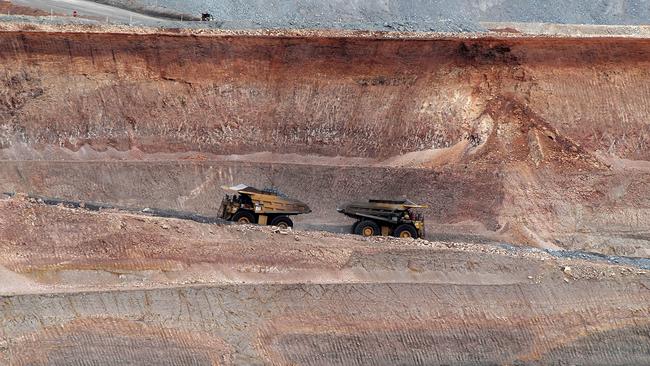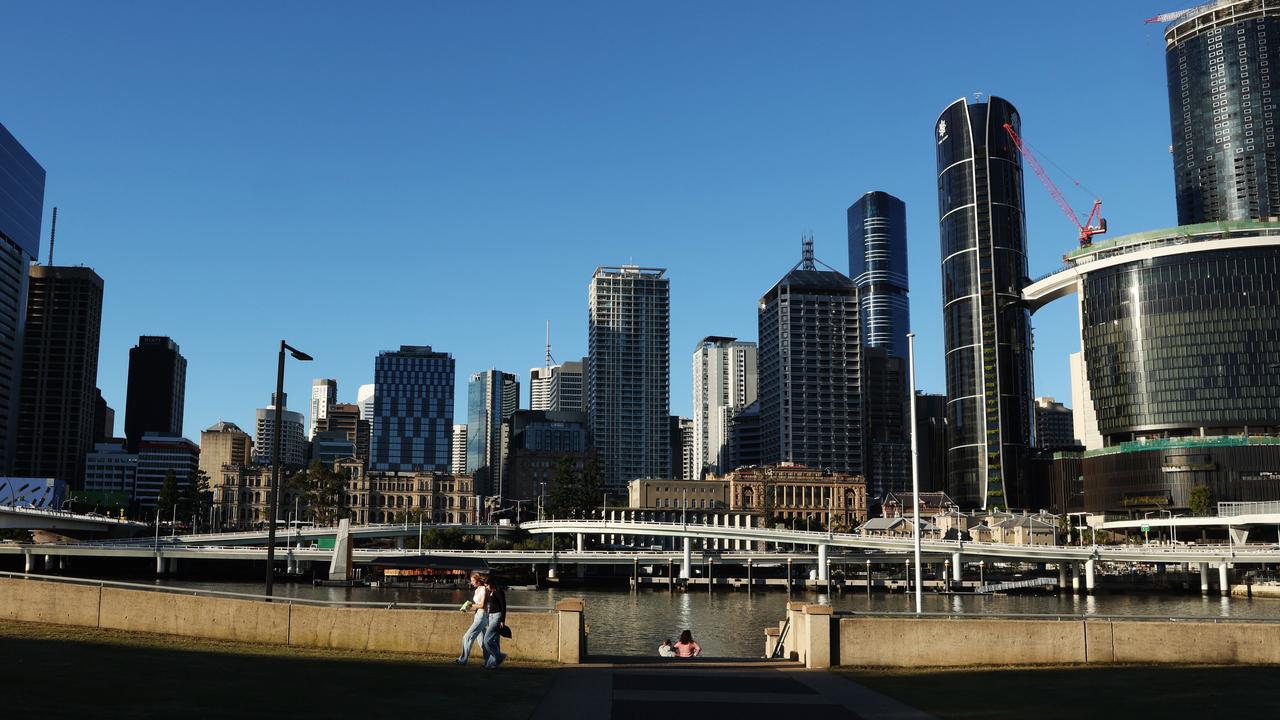BHP’s boss tables his ‘Plan A’ to be crowned copper king
The bets on copper and potash show BHP is undergoing another of its landmark reinventions. Will it be enough?

There are not too many chief executives who can casually dismiss a $74bn bid for a global rival as little more than a fallback option.
Yet BHP boss Mike Henry is keen to show he has quickly moved on from this year’s spurned bid for Anglo American. He has big plans to grow in copper, the hottest metal going right now.
Anglo and its temperamental South American copper mines would have been nice to have, but Henry has essentially told his investors to just forget about them: BHP is already the king of copper.
Anglo “wasn’t Plan A for us”, the BHP boss says. “Plan A is everything that you see outlined in these results, including getting better and better from our ongoing operations, but also about unlocking further growth within our existing resource base”.

Henry dedicated a major chunk of BHP’s annual earnings presentation outlining a path to grow copper output from Chile, Argentina as well as his new promising copper province in South Australia, which once up and running from next decade will be one of the richest collection of copper deposits in the world.
The ambition on copper runs in parallel with already well laid plans to spend billions building out a potash mine in remote Canada. Combined these are the two future facing commodities that BHP, today iron ore has hitched its future to.
To remove any doubt about BHP’s position. Henry offers a not so subtle reminder: “We’ve got the largest copper resources of any company in the in the world”.
Enough copper?
Henry needs to convince his investors as much as himself he doesn’t need to pay inflated prices for new assets and keep his copper crown.
However the lingering question is whether today’s pipeline of projects will be enough to sustain BHP’s position as well as grow in the face of rising global demand for decades to come.

And much of BHP’s resources remain deep in the ground. Unlike operational mines such as those being pursued through Anglo, new mines come huge development spend and ramp-up risk.
The global landgrab for copper underway was enough to spur on BHP to launch a complicated bid and break-up plan for Anglo American. The Australian miner didn’t want to get left behind.
And after several sweeteners, the proposal showed BHP was prepared to pay a hefty premium and endure regulatory pain and years of distraction in order to get Anglo’s copper options. That all fell apart in May after a firm rejection from the Anglo board. No wonder BHP needed to come back to the market with a better plan.

All the excitement around copper built around the metal playing a big part in the decades long energy shift. It is used in everything from wind turbines, EVs and batteries, in addition to its existing day-to-day demand in construction and electronics. At the same time population growth and urbanisation will add another dimension to this demand.
On BHP’s internal numbers demand for copper is set to increase 70 per cent over the next three decades from 2021 levels. The combination of energy transition (wind, EVs batteries) and remarkably data centres – will make up more than the anticipated demand that economic growth with drive.
That means miners like BHP need to aim for lofty increases in production, at a time when the world’s known and substantial copper resources are largely found or have already been earmarked for development.
Rising copper demand comes as BHP’s biggest producing mine, Chile’s Escondida it controls, but shares with Rio Tinto and others starts to age.

Henry on Tuesday outlined a plan to head off the decline. On average Escondida delivered 1.3 million tonnes of copper annually for the past four years, This will shift up next year but start to declined from 2027 to around 1.2 million tonnes.
With the additional of a new concentrator, and an expansion of part of the mine and increase in offtake recovery, this can move back to 1.4 million tonnes annually for much of next decade.
So too the Copper South Australia region based around the Olympic Dam and recently acquired Oz Mineral operations of Prominent Hill this is forecast to build to 500,000 tonnes annually by the end of this decade.
With new discoveries, such as the highly promising Oak Hill deposit. Henry reckons this South Australian region can eventually lift to 650,000 tonnes of annual output and beyond.
Just last month BHP spent $3.2bn, under a joint venture with Swedish-backed Lundin Mining to develop copper deposits on the border of Argentina and Chile high in the Andes mountains over time. These aren’t the scale of Anglo’s deposits but they offer a copper sweetener for the future. Others that have looked at the sites believe the copper will be high cost to mine, but then again most of the easy deposits have already been claimed.
Henry was speaking as BHP posted a full year cash profit of $US13.7bn, slightly ahead of expectations, with the headline result marred with $US6.5bn on charges linked to mothballing Australian nickel and Samarco dam failure payout in Brazil. The Pilbara iron ore operations generates 65 per cent of underlying earnings, copper generates 30 per cent.
Reinvention
All this will come with a heavy investment spend with BHP setting aside a heavy $US10bn on capex next year, this is forecast to rise to $US11bn annually over the medium term.
Most of the spending will be set aside for the so-called future facing commodity projects like copper and potash.
But these bets on copper and potash show BHP is undergoing another of its landmark transitions. Over the decades BHP has moved in and out of big commodities and upstream processing like steelmaking and even the Billiton assets which became South 32. More recently it sold down coking coal, and will run down its thermal coal business. And under Henry the miner folded all of its legacy oil and gas operations into Woodside.
“BHP is a company that has reinvented itself over time,” Henry says, “We’re in the process right now of reshaping the portfolio for the future”.
–
Woodside pays up
The Woodside boss Meg O’Neill has an equally ambitious growth agenda ahead of her. She will spend between $US5bn ($7.4bn) and $US5.5bn on growth projects in this calendar year, that’s up from $US2.8bn this time a year ago. Some of capex will need to be spent on acquisitions including last month’s $US900m buyout of US energy player Tellurian that is developing the Driftwood LNG project. That came on the heels of buying a ammonia production facility in Texas worth $US2.35bn.
This means Woodside’s capex bill is likely to remain high well into the next decades as she builds out projects including the $US12.5bn Scarborough and develops Driftwood which needs to go to financial sign-off early next year. If the project moves ahead, this gives her a foothold in US gas export market.

However it’s a balancing act for O’Neill. The high spending commitment comes as she is also holding to promise to shower shareholders with cash.
Woodside’s better-than-expected first half dividend of 69 US cents a share represents a payout ratio of 80 per cent, at the very top end of the energy company’s preferred range. With hungry capital demands of bringing energy to market this level of payout leaves little room for error if oil and gas prices pull back. With tensions in the Middle East high, that’s unlikely in the near term.
For now everything is moving along as planned for O’Neill who has committed to high dividends for now.
Woodside delivered a better-than-expected underlying net profit of $US1.63bn for the June half year. This was up 14 per cent from the same time last year. The dividend helped push Woodside’s shares up nearly 4 per cent.
And after investing billions over nearly a decade into Senegal’s Sangomar greenfield offshore oil project, Woodside started pumping oil in June and in record time already hit the 100,000 barrel a day nameplate capacity. With the oil sold into Asian and European markets this represent a near term earnings stream for the energy player.
Closer to home the bulk of the legal uncertainty has been removed from Scarborough LNG project. The $US12.5bn offshore project was 67 per cent complete at the end of June and O’Neill is targeting the first LNG to be shipped from 2026. As earnings flow in, that will go a long way into bridging the gap against any prospective cashflow crunch. O’Neill also insists she has plenty of levers to pull to protect cashflow.
“The business is performing extremely strongly, and that’s evidence in our cash flow generation and the ability to pay strong dividends,” the Woodside boss says.
johnstone@theaustralian.com.au
Originally published as BHP’s boss tables his ‘Plan A’ to be crowned copper king



